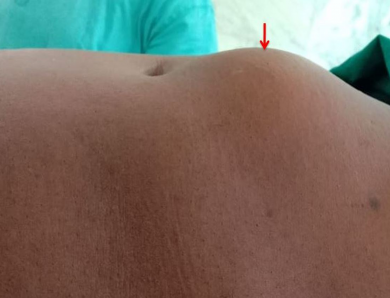
The Link Between Vaginal Prolapse And Post-Hysterectomy Discharge
Vaginal prolapse and post-hysterectomy discharge are two conditions that can affect women’s reproductive health. While they may seem unrelated, there is often a significant connection between the two. In this article, we’ll explore the link between vaginal prolapse and post-hysterectomy discharge, understanding their causes, symptoms, and potential treatment options.
What Is Vaginal Prolapse?
Vaginal prolapse occurs when the structures that support the pelvic organs weaken, causing them to descend into the vagina. This can lead to symptoms such as a feeling of pelvic pressure, urinary incontinence, and discomfort during sexual intercourse. Vaginal prolapse can affect women of all ages but is more common in older women, particularly those who have given birth vaginally multiple times or have undergone pelvic surgery. For more information on pelvic health and related conditions, including vaginal prolapse and post-hysterectomy discharge, visit https://www.petermlotzemd.com for expert insights and resources.
Post-Hysterectomy Discharge
Post-hysterectomy discharge refers to vaginal discharge that occurs after a woman has undergone a hysterectomy, the surgical removal of the uterus. While some amount of discharge is normal during the healing process, persistent or abnormal discharge may indicate complications such as infection, fistula formation, or vaginal cuff dehiscence. It’s essential for women to understand the difference between normal and abnormal discharge following a hysterectomy.
The Connection Between Vaginal Prolapse And Post-Hysterectomy Discharge
The link between vaginal prolapse and post-hysterectomy discharge lies in the disruption of the pelvic floor and vaginal support structures. By removing the uterus during a hysterectomy, the pelvic region’s anatomy may be altered, and the supporting tissues may become weakened. This weakening can contribute to the development or exacerbation of vaginal prolapse, leading to symptoms such as increased discharge, pelvic discomfort, and urinary problems.
Symptoms And Diagnosis
Depending on the severity of the condition, both vaginal prolapse and post-hysterectomy discharge may manifest with a range of symptoms. Common symptoms include vaginal pressure or bulging, difficulty emptying the bladder or bowel, and abnormal vaginal discharge. Physical examinations and pelvic imaging studies (e.g., magnetic resonance imaging; (MRI) or ultrasound) are frequently utilized in the diagnostic process to determine the nature of prolapse and detect any underlying factors that may be associated with incontinence.
Treatment Options
Symptom severity and the underlying cause determine the course of treatment for post-hysterectomy incontinence and vaginal prolapse. Conservative measures such as pelvic floor exercises, lifestyle modifications, and vaginal pessaries may be recommended for mild cases. Surgical repair of the pelvic floor and provision of support for the vaginal tissues may be required in more severe instances. Surgery may involve techniques such as vaginal or abdominal reconstruction, depending on the individual’s needs and preferences.
Prevention And Management Strategies
Although complete prevention is not possible for vaginal prolapse and post-hysterectomy discharge, women can mitigate their risk and effectively manage associated symptoms by following certain measures. Maintaining a healthy weight, practicing good pelvic floor hygiene, avoiding heavy lifting or straining, and seeking prompt medical attention for any unusual symptoms can help prevent complications and improve outcomes.
Conclusion
Vaginal prolapse and post-hysterectomy discharge are complex conditions that can significantly impact women’s quality of life. By understanding the link between these two conditions and recognizing the symptoms early, women can seek timely medical intervention and appropriate treatment to address their concerns effectively. With proper management and support, women can regain control over their pelvic health and enjoy a better overall quality of life.




